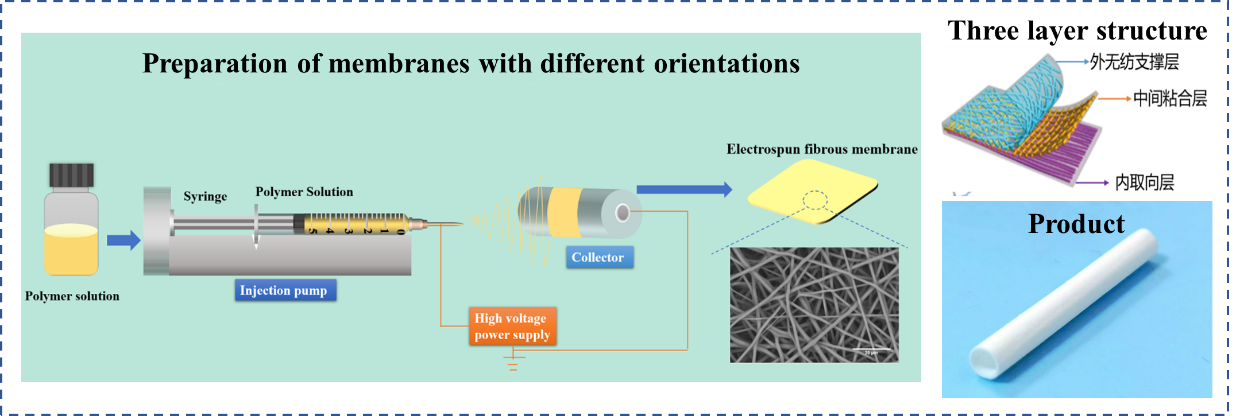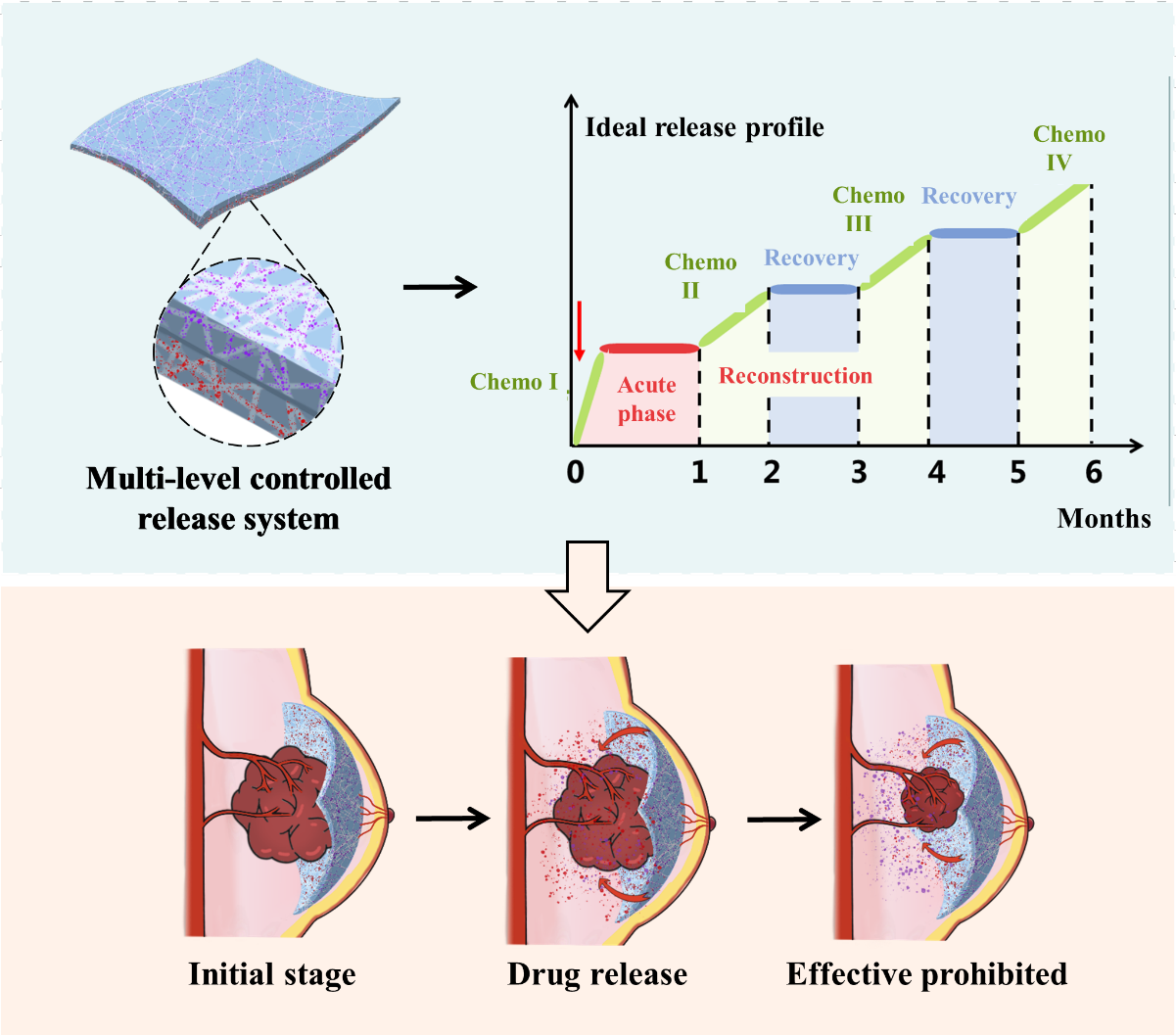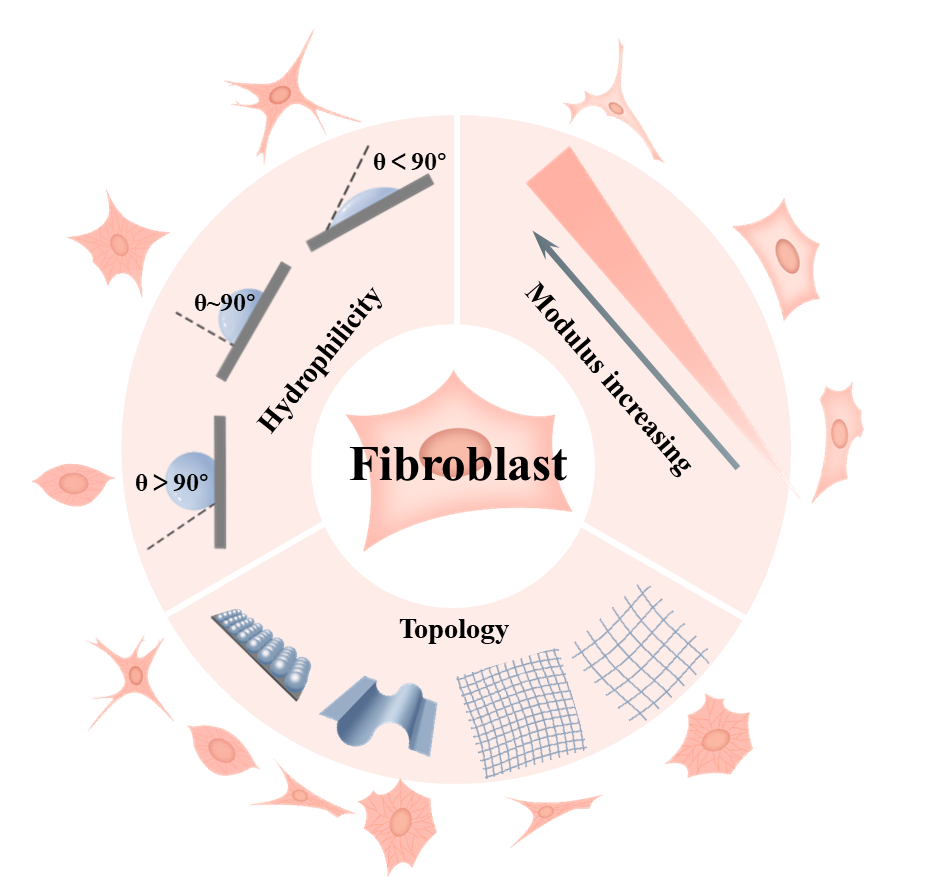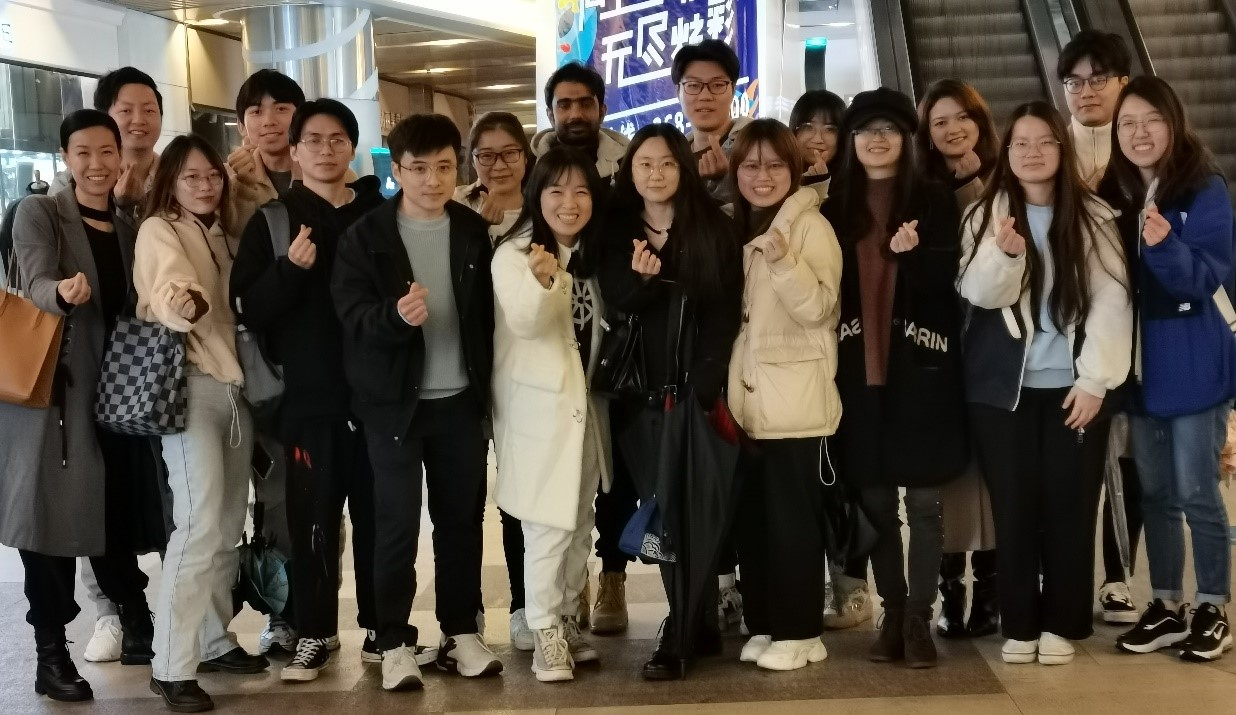Education:
2004.09—2009.07, Institute of Chemistry Chinese Academy of Sciences, Chemistry, Ph.D
2000.09—2004.07, Tsinghua University, Chemistry, Bachelor
Working Experience:
2022.07-present, Shenzhen University, Institute for Advanced Study, Principle Investigator, Associate Professor
2016.07-2022.06, Shenzhen University, Institute for Advanced Study, Principle Investigator, Assistant Professor
2016.01-2016.06, Institute of Chemistry Chinese Academy of Sciences, Associate Research Fellow
2015.01-2016.05, The State University of New York at Stony Brook, Chemistry, visiting scholar
2009.07-2016.01, Institute of Chemistry Chinese Academy of Sciences, Assistant Research Fellow
2019.02-present, University of Maryland, College Park, Materials science and engineering, Adjunct associate professor
Academic Affiliations:
American Physical Society, member
Awards:
2016, Shenzhen Overseas High-Caliber Personnel (Level C)
2017, China · Nanjing Advanced Material Competition, the third prize
2018, High-Level Talent in Nanshan District of Shenzhen
2018, Guangdong College Students' entrepreneurship Competition 2018, Bronze award, Advisor
2021, Outstanding Undergraduate Teacher Award
2021, Instructor of One hundred outstanding undergraduate graduation thesis of Shenzhen University 2021
2021, Outstanding graduate Teacher Award
Research Interests:
1. Design, development, and performance evaluation of high-performance implanted medical devices
(1) Application of polymer materials in nerve repair
Severe peripheral nerve injury requires surgical repair. Clinically, the small defect below 5mm is usually anastomosed directly with a suture. Longer nerve defects close to or greater than 10 mm must be sewn into the implant for bridging. In the past, autologous or allogeneic nerve tissues were usually used as implants for repair, but these two types of implants have limited sources and can easily cause donor area damage or rejection.
Based on electrospinning technology and the development of absorbable synthetic polymer material, this study promoted nerve repair tubes and focused on the influence of the surface interface structure and precise regulation of biomechanical properties. This study also investigated the reconstruction of the local peripheral nerve microenvironment and elucidated the biological mechanism of its promotion of nerve repair. Moreover, the transformation of the optimized structure was applied in clinical research to provide solutions for the physical regulation of the whole synthetic material for peripheral nerve defects and a scientific theoretical basis for the importance of microenvironment reconstruction in tissue repair.

(2) Design and development of a multilevel controlled release system, controlled release mechanism, and application
According to the Cancer Statistics 2020, cancer incidence and mortality rates continue to increase rapidly worldwide. Cancer is one of the most dangerous diseases threatening human health. Researching the treatment methods, drugs and preparations for this major disease and realizing the effective treatment of cancer is an important scientific topic related to the quality of patients' life. Since developing a new drug requires a long R&D cycle and a huge research cost, adopting a new drug delivery system is a fast, feasible, and effective method.
The controlled multi-stage drug release system proposed in this study mainly aims at various side effects after surgical treatment of malignant tumors. By deeply exploring the compliance mechanism of biodegradable materials to different physiological cycles of the body, using electrospinning technology to achieve accurate regulation of physical and chemical properties of the system, and exploring the behavior and mechanism between material interface and cell. To achieve a synergistic regulatory strategy of tumor-induced growth and metastasis and controlled in situ drug administration to solve the key problem of improving patients' quality of life.

(3) Study on the application of implantable polymer materials in soft tissue repair and interaction with biological matrix
The extracellular microenvironment regulates cell behavior and function at the cell-extracellular matrix (ECM) interface and plays an important role in promoting soft tissue repair and regeneration, which has attracted increasing attention.
In this study, polymeric materials were implanted to construct tissue engineering scaffolds, and ECM was simulated to provide microenvironmental clues to influence cell morphology, migration, proliferation, and differentiation. Biomechanics, as dynamic microenvironmental cues, is essential to maintain the mechanical balance between the cytoskeleton and ECM. The focus is on current strategies for constructing microenvironmental cues to elucidate the role of biomechanical cues at the cell-extracellular matrix interface in regulating cell behavior. Finally, new concerns and research ideas for developing a new generation of soft tissue repair biomaterials are proposed.

1. Study on phase structure, crystal shape, and material properties
(1) Phase separation, crystallization, morphology, and property control of dilute hydrocarbon blends under kinetic symmetry and asymmetry
As the most used plastic material in the 21st century, polyolefin can form special phase morphology and structure in the processing process, thus obtaining unique properties. It has also become a hot research system in condensed matter theory. In this study, HDPE/CFC-11 and other blends were selected to study their phase separation, crystallization, morphology, and performance control under dynamic symmetry and asymmetry.
(2) Study on phase separation kinetics, crystallization kinetics, and morphology of polymer under high temperature and pressure
Flash spinning produces extremely fine spinning by dissolving polymer solution in a special spinning solvent and spraying it under high pressure. The blending solution reaches a homogeneous state at high temperature and high pressure and is finally ejected through the nozzle. The pressure is rapidly reduced, the spinning solvent evaporates rapidly, and the polymer long chain crystallizes and rapidly stretches into very fine fibers because of the supersonic flow. Flash spinning generally has strong mechanical properties, good waterproof and air permeability, and is widely used in the protective and medical clothing industries. This topic is devoted to controlling the morphology and properties of the final produced fibers by using flash spinning to control the homogeneous state during ejection and studying the kinetics of polymer phase separation and crystallization under high temperature and pressure.
Research Projects:
1. General Project of National Natural Science Foundation of China, Precise regulation of matrix rigidity to guide the treatment of tumor invasion and metastasis (32071332), from Jan 2021 to Dec 2024, ¥580,000 funds, under research, leader.
2. Shenzhen Basic Research Project (Natural Science Foundation), Investigation of toxicity of micro/nano plastics through oral ingestion and establishment of food pollution prevention and control standards, from Oct 2021 to Oct 2024, ¥ 600,000 funds, under research, leader.
3. Basic Research Project of Knowledge Innovation Plan of Shenzhen, Study on drug-loaded fibrous membranes used for postoperative chemotherapy of tumors, from Aug 2017 to Mar 2020, ¥490,000 funds, Completed, leader.
4. Shenzhen High-end Talent Scientific Research Project, Design and development of implant devices and their preclinical evaluation, from Jan 2018 to Dec 2020, ¥ 3,000,000 funds, Completed, leader.
5. Horizontal Projects, Induced tissue repair materials, from Oct 2020 to Sep 2022, ¥500,000 funds, under research, leader.
6. Horizontal Projects, Preclinical evaluation of implant materials and devices, from Jan 2021 to Dec 2021, ¥1,000,000, Completed, leader.
7. Horizontal Projects, Test analysis and material evaluation of drug-carrying fibrous membrane for postoperative tumor radiotherapy, from Jun 2019 to Jun 2021, ¥100,000, finished, leader.
8. Horizontal Projects, Analysis, and evaluation of biostable materials for long-term implantation, from Jan 2019 to Dec 2019, ¥100,000, finished, leader.
9. Youth Program of National Natural Science Foundation of China, Study on anti-adhesion and anti-infection functionalization of microfiber membrane, from Jan 2012 to Dec 2013, ¥250,000, finished, leader.
10. Important direction of knowledge innovation project of Chinese Academy of Sciences, Study on the key physical and chemical problems of macromolecule in biomedical and environmental water treatment applications, from Sep 2009 to Sep 2013, ¥600,000, finished, participated.
11. Youth Program of National Natural Science Foundation of China, Preparing hyaluronic acid (HA) based nanofibrous membrane by electrospinning, from Jan 2006 to Dec 2008, ¥250,000, finished, participated.
Research Team:
Research assistant:Ruiyue Wei, Jie Wang, Jiangling Yu
Post doctor:Zhenyu Lin, Chengmei Sun, MUHAMMAD SAIF UR RAHMAN
Master Degree Candidate:Shifen Huang, Hao Chen, Shengmei Li, Liu Wang, Jiawei Xu, Huijing Wang

Lab Alumni
Han Li, Work, Science teacher for Primary school in Shenzhen, Food safety and toxicology.
Zifan Liu, Master student, University of Florida, Magnetic materials.
Weixian Zhou, Doctoral student, National Center of Nanoscience and Technology, Nanomaterial.
Yujian Zhang, Doctoral student, University of Wisconsin-Madison, Chemical education.
Jiaen Wu, Doctoral student, Princeton University, Chemical, and Biological Engineering.
Xuhong Chen, Doctoral student, University of Massachusetts Amherst, Polymer Science and Engineering.
Tianhao Ming, Doctoral student, University of Massachusetts Lowell, Polymer chemistry.
Publications:
1. Muhammad Saif Ur Rahman, Jiaen Wu, Chen hao, Chengmei Sun, Ying Liu,Shanshan Xu* Matrix Mechanophysical Factor: Pore size governs the cell behavior in cancer, Advances in Physic: X (2022), 8(1): 2153624
2. Zhipeng Zeng, Yajing Yang, Junyong Deng, Muhammad Saif Ur Rahman, Chengmei Sun*,Shanshan Xu*, Physical Stimulation Combined with Biomaterials Promotes Peripheral Nerve Injury Repair, Bioengineering (2022), 9, 292
3.Shanshan Xu, Chenhong Wang, Ruoqing Mao, Xiaoyu Liang, Heran Wang, Zhenyu Lin, Jiangxue Li, Shilin Li, Jipeng Jiang, Tongshuo Zhang, Yongfu Ma, Yang Liu, Charles C. Han, Ying Liu*, Surface structure change properties: Auto-soft bionic fibrous membrane in reducing postoperative adhesion, Bioactive Materials (2022), 12: 16-29.
4. Nuozi Zhang, Chenhong Wang, Hao Chen, Jiaen Wu, Charles C. Han andShanshan Xu*, Electrospun fibrous membrane with confined chain configuration: dynamic relaxation and glass transition, Polymers, (2022), 14(5):939.
5. Shifen Huang#, Yiming Zhang#, Chenhong Wang*, Qinghua Xia, Muhammad Saif Ur Rahman, Hao Chen, Charles Han, Ying Liu* andShanshan Xu*, Mechanisms affecting physical aging and swelling by blending an amphiphilic component, International Journal of Molecular Sciences (2022), 23:2185.
6. Chenhong Wang#, Zifan Liu#, Nuozi Zhang#, Shifen Huang, Ruoqing Mao, Heran Wang, Qinghua Xia, Charles C. Han,Shanshan Xu*, Ying Liu*; Three dimensional fibrous scaffolds as tissue repairing templates during postoperative healing, Materials & Design (2021), 210:110019.
7. Luoan Shen, Qinyi Gan, Youcheng Yang, Cesar Reis, Zheng Zhang,Shanshan Xu, Tongyu Zhang and Chengmei Sun*, Mitophagy in Cerebral Ischemia and Ischemia/Reperfusion Injury, Frontiers in aging neuroscience (2021), 13:687246.
8. Shilin Li#,Shanshan Xu#, Xiaoyu Liang, Yueguang Xue, Jie Mei, Yongfu Ma, Yang Liu, and Ying Liu*, Nanotechnology: breaking the current treatment limits of lung cancer, Advanced Healthcare Materials (2021), 10:2100078.
9. Jiaen Wu,Shanshan Xu*, Charles C. H and Guangcui Yuan*, Controlled drug release: on the evolution of physically entrapped drug inside the electrospun poly (lactic-co-glycolic acid) matrix, Journal of Controlled Release (2021), 331:472-479.
10. Hao Chen, Xuhong Chen, Huiying Chen, Xin Liu, Junxing Li, Jun Luo, Aihua He, Charles C. Han, Ying Liu,Shanshan Xu*; Molecular interaction, chain conformation, and rheological modification during the electrospinning of hyaluronic acid aqueous solution, Membranes (2020), 10:217.
11. Zixin Zhang#, Kexin Li#, Weixian Zhou#, Jin'ge Gu, Ying Liu, Charles C. Han andShanshan Xu*; Factors influencing the interactions in Gelatin/Hydroxyapatite hybrid materials, Frontiers in Chemistry (2020), 8:489.
12. Jiaen Wu#, Zixin Zhang#, Jin'ge Gu#, Weixian Zhou, Xiaoyu Liang, Guoqiang Zhou, Charles C. Han,Shanshan Xu*, Ying Liu*; Mechanism of a long-term controlled drug release system based on simple blended electrospun fibers, Journal of Controlled Release (2020), 320: 337-346.
13. Qinghua Xia#, Nuozi Zhang#, Jiangxue Li#, Heran Wang, Chenhong Wang, Zixin Zhang, Jin'ge Gu, Mengjie Wang, Charles C. Han,Shanshan Xu*, Ying Liu*; Dual-functional esophageal stent coating composed of paclitaxel-loaded electrospun membrane and protective film, Journal of Biomedical Nanotechnology (2019), 15(10): 2108-2120.
14. Xinxing Zhu, Yawei Yan, Chunzhi Ai, Shan Jiang,Shanshan Xu, Min Niu, Xiangzhen Wang, Genshen Zhong, Xifeng Lu, Yu Xue, Shaoqi Tian, Guangyao Li, Shaojun Tang, Yizhou Jiang*, Jarid2 is essential for the maintenance of tumor initiating cells in bladder cancer, Oncotarget (2017), 8(15):24483-24490.
15. Xinxing Zhu, Yawei Yan, Demeng Chen, Chunzhi Ai, Xifeng Lu,Shanshan Xu, Shan Jiang, Genshen Zhong, Dongbao Chen, Yizhou Jiang*, Long Non-coding RNA HoxA-AS3 interacts with EZH2 to Regulate Lineage Commitment of Mesenchymal Stem Cells,Oncotarget(2016), 7(39):63561-63570.
16. Zixin Zhang, Jianxiong Tang, Heran Wang, Qinghua Xia,Shanshan Xu*, Charles Han*. Controlled antibiotics release system through simple blended electrospun fibers for sustained antibacterial effects. ACS Applied Materials & Interfaces (2015), 7, 26400−26404.
17. Qinghua Xia, Ziwen Liu, Chenhong Wang, Zixin Zhang,Shanshan Xu*, and Charles C. Han* A biodegradable trilayered barrier membrane composed of sponge and electrospun layers: hemostasis and antiadhesion. Biomacromolecules (2015), 16, 3083-3092.
18. Chenhong Wang, Kuo Zhang, Heran Wang,Shanshan Xu*, Charles C. Han*, evaluation of biodegradability of poly (DL-lactic -co-glycolic acid) scaffolds for post-surgical adhesion prevention: in vitro, in rats and in pigs. Polymer (2015), 61, 174-182.
19. Ming Cheng, Heran Wang, Zhen Zhang, Nan Li, Xiaohong Fang*,Shanshan Xu*, Gold nanorod-embedded electrospun fibrous membrane as a photothermal therapy platform. ACS Applied Materials & Interfaces (2014), 6 (3), 1569–1575.
20. Heran Wang, Ming Cheng, Jianming Hu, Chenhong Wang,Shanshan Xu* and Charles C Han*. Preparation and optimization of silver nanoparticles embedded electrospun membrane for implant associated infections prevention. ACS Applied Materials & Interfaces (2013), 5 (21), 11014–11021.
21. Heran Wang, Min Li, Jianming Hu, Chenhong Wang,Shanshan Xu*, Charles C. Han*. Multiple targeted drugs carrying biodegradable membrane barrier: anti-adhesion, hemostasis and anti-infection. Biomacromolecules (2013) 14: 954-961.
22. HuarongNie, Junxing Li, Aihua He*,Shanshan Xu, Qingsong Jiang, Charles C Han*, Carrier system of chemical drugs and isotope from gelatin electrospun nanofibrous membranes, Biomacromolecules (2010), 11(8):2190-2194.
23. HuarongNie, Aihua He*, jianfenzheng,Shanshan Xu, Charles C Han*, Effect of poly(ethylene oxide) with different molecular weights on the electrospinnability of sodium alginate, Polymer (2009), 50(20):4296-4934.
24.Shanshan Xu, Junxing Li, Aihua He*, Wenwen Liu, Xingyu Jiang, Jianfen Zheng, Charles C. Han*, Dufei Fang, Benjamin S. Hsiao, Benjamin Chu. Chemical crosslinking and biophysical properties of the electrospun hyaluronic acid based ultra-thin fibrous membranes. Polymer (2009) 50: 3762-3769.
25.Shanshan Xu, Jun Zhang, Aihua He*, Junxing Li, Hao Zhang, Charles C. Han*. Electrospinning of native cellulose from nonvolatile solvent system, Polymer (2008) 49: 2911–2917.
26. Huarong Nie, Aihua He*, Jianfen Zheng,Shanshan Xu, Junxing Li, Charles C. Han*, Effects of chain conformation and entanglement on the electrospinning of pure alginate, Biomacromolecules (2008), 9(5):1362-1365.
27. Hua Wang, Changmei Cheng*, Hongchao Zheng, Xiaohong Liu, Chang Fang,Shanshan Xu, Yufen Zhao, Study on disulfur-backboned nucleic acid: part 2, efficient synthesis of 3 ,5 -dithiothymidine, Chemistry Letters (2005),34(3):432-433.
28. Hongchao Zheng, Changmei Chen*, Hua Wang,Shanshan Xu, Yufen Zhao, Study on disulfur-backboned nucleic acid: part 1, efficient synthesis of 3',5'-dithio-2'-deoxyadenosine, Synlett(2004),14:2585-2587.
Patents:
Totally applied for more than 140 national patents, 62 of which have been authorized, 24 of which have entered the industrialization stage. The following are only listed:
1. Charles C. Han, Shanshan Xu, Licang Li, Junxing Li, Mengzhi Shen, A sterilization method for polylactic acid ultrafine fibrous membrane material (200910209501X), filed Oct 29, 2009 and issued Apr 24, 2013.
2. Charles C. Han,Shanshan Xu, Mengzhi Shen, Licang Li, Composite microfiber membrane with biocompatible core-shell structure and its preparation method (2009102095024), filed Oct 29, 2009 and issued Oct 10, 2012.
3. Charles C. Han,Shanshan Xu, Mengzhi Shen, Licang Li, Polylactic acid - glycolic acid copolymer microsphere and a preparation method (2009102095043), filed Oct 29, 2009 and issued Jul 11, 2012.
4. Charles C. Han,Shanshan Xu, Huarong Nie, Junxing Li, A natural polymer microfiber membrane labeled with radionuclide and its preparation method (2009102095058), filed Oct 29, 2009 and issued Jan 02, 2013.
5. Charles C. Han,Shanshan Xu, Licang Li, Junxing Li, Mengzhi Shen, A shaping method of ultrafine fiber film (2009102095062), filed Oct 29, 2009 and issued Jul 11, 2012.
6. Charles C. Han,Shanshan Xu, Mengzhi Shen, Licang Li, Heat responsive microfiber membrane material and its preparation method (2009102095077), filed Oct 29, 2009 and issued Jul 11, 2012.
7. Charles C. Han,Shanshan Xu, Mengzhi Shen, Licang Li, Biodegradable and absorbable monodisperse polyester microspheres and its preparation method (2009102095081), filed Oct 29, 2009 and issued Aug 22, 2012.
8. Charles C. Han,Shanshan Xu, Mengzhi Shen, Licang Li, Preparation method of collagen microfiber membrane material (2009102095096), filed Oct 29, 2009 and issued Jul 11, 2012.
9. Charles C. Han,Shanshan Xu, Mengzhi Shen, Licang Li, Surface modified lactic acid - glycolic acid copolymer microspheres and its preparation method (2009102095109), filed Oct 29, 2009 and issued Dec 26, 2012.
10. Charles C. Han,Shanshan Xu, Mengzhi Shen, Licang Li, Preparation method and application of carbon microtube encapsulated tin nanoparticle material (2009102108912), filed Nov 13, 2009 and issued Oct 10, 2012.
11. Charles C. Han,Shanshan Xu, Licang Li, Mengzhi Shen, A method for biomimetic preparation of hydrogel (2010105473944), filed Nov 17, 2010 and issued Sep 11, 2013.
12. Charles C. Han,Shanshan Xu, Licang Li, Mengzhi Shen, A core-shell structure microcapsule and its preparation method (201010547403X), filed Nov 17, 2010 and issued Mar 27, 2013.
13. Charles C. Han,Shanshan Xu, Licang Li, Mengzhi Shen, A gold nanorod-chitosan membrane and its preparation method (2010105474059), filed Nov 17, 2010 and issued Jan 01, 2014.
14. Charles C. Han,Shanshan Xu, Licang Li, Mengzhi Shen, A nested nano-structure electrostatic spinning fiber membrane and its preparation method (2010105474129), filed Nov 17, 2010 and issued Sep 03, 2014.
15. Charles C. Han,Shanshan Xu, Licang Li, Mengzhi Shen, A preparation method of organic-inorganic nanocomposite membrane (201010557248X), filed Nov 19, 2010 and issued Sep 11, 2013.
Conferences and Presentations:
2017.11, International symposium on polymer and condensed matter physics, Shenzhen, Organizers.
2018.03, The APS March Meeting, Los Angeles, Invited talk: Physical or Chemical Aging of PLGA Electrospun Fibers Related to its Sequence Distribution.


